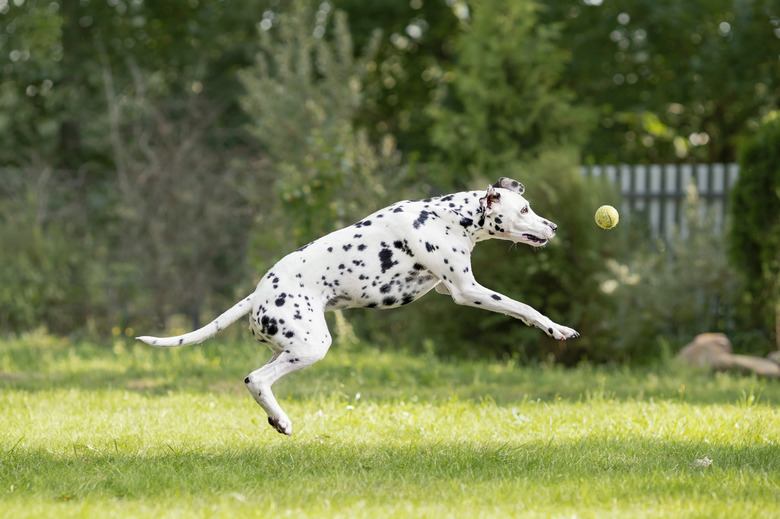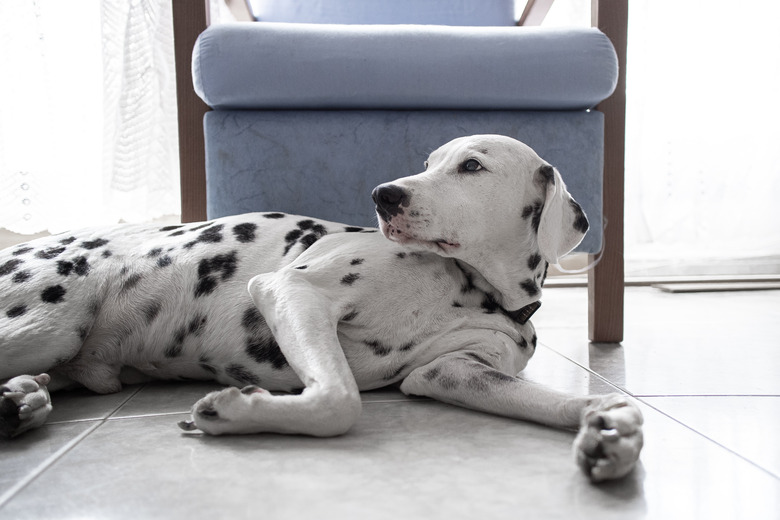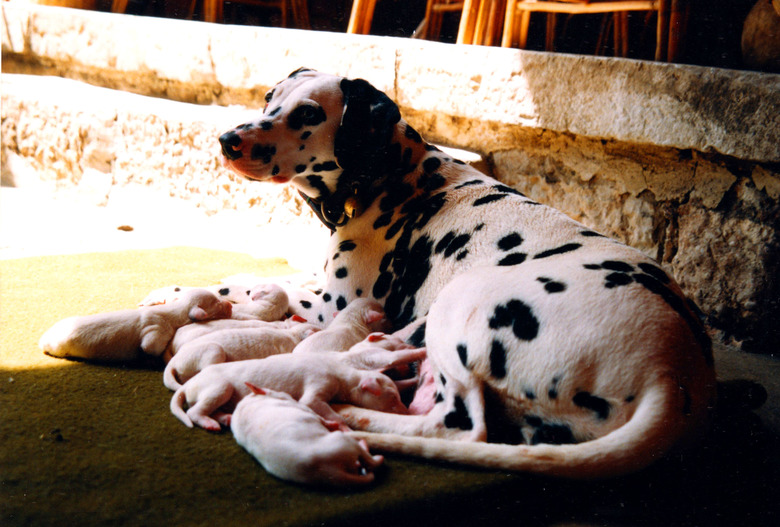The Scientific Reason For A Dalmatian Dog's Spots
You might expect there to be an easy explanation for why Dalmatians have their unique black and white coat pattern.. But it turns out that there is actually a complex cause for why Dalmatian dogs have spots. Plus, no other dog breed has a similar type of coat pattern, so the spots are unique to a Dalmatian. The breed standard for Dalmatian dogs says they can have spots that are black or brown, but never both. The spots are usually in the size of a half-dollar and are slightly larger on the dog's body than they are on the dog's legs, head, and tail. the spots shouldn't overlap into blobs, and the ears should also have spots too. So what makes this pattern special to Dalmatians?
Researchers have always wanted to understand how there came to be so many different coat types in dogs once they were domesticated. They used a commercial genetics test along with information provided by the customers to test for genetic causes. They found an explanation for why some dog coats look the way they do, and also how that relates to Dalmatian spots. It's a little science-y, but in a cool way!
What causes Dalmatian spots?
What causes Dalmatian spots?
Dogs have 78 chromosomes, or 39 pairs from each parent. By comparison, a cat has 38 chromosomes, and a human has 46. A 2021 study in the journal PLOS One says that researchers found a region on chromosome 38 that when present usually makes a dog have a roaned coat pattern. A roan pattern means that there is a lot of white mixed in with other coat colors like brown, gray, or black. One marker in that genetic region, called an 11-kb tandem duplication on the usherin gene, was just not there in dogs that had no roan coat color.
All Dalmatian dogs had the duplication though, meaning they have the mutation for a roan coat, it just doesn't show up. The researchers also noticed that wirehaired pointing griffons and Australian cattle dogs, which are dogs that are typically roaned, have this. And, that there is a greater genetic difference between a wirehaired pointing griffon (roaned) and a Labrador retriever (non-roaned). The fact that the Dalmatian has this genetic marker means that it was a gene that was shared by other similar dogs when the Dalmatian breed started to form.
Did you know that Dalmatian puppies are not born with spots? They are pure white at birth. Their spots don't develop until they are about two weeks old!
The researchers say that the Dalmatian's unique spots are caused by an interaction between this marker on chromosome 38 and another marker that is unique to Dalmatians. Dalmatians also have to have the gene for white fur, which is called the S gene. There are different types of whiteness though! There could be more white or less white, with patches of other colors. A dog can have a white collar, for instance, or patches of color on white fur.
A Dalmatian also has to have genes that can produce spots, not patches, ticks, or flecks. Ticks are much smaller than either spots or patches, and flecks are smaller mixes of color than ticks. Dalmatian spots are always a solid color, never ticked or flecked. The current theory is that Dalmatian spots are the interesting combination of full white coloring from the white gene, along with the roan marker, along with a flecking gene — not a ticking gene.
History of Dalmatian dogs
History of Dalmatian dogs
We don't actually know much about Dalmatians., even though they are one of the most popular and recognizeable breeds. Some ancient Egyptian paintings show spotted dogs, but they are also shown in unusual color combinations like blue-green with black spots. We also know that the Egyptians combined animals and people into figures that weren't realistic, like a human with a crocodile head to represent the god of the Nile River, so we can't say with confidence that when they show a spotted dog that the dog really existed.
The first known written information about a white dog with black spots appears in 1375 in Croatia. The Dalmatian dog is not closely related to other dog breeds. It is similar to other pointing or sporting dogs like the Weimaraner, but the other dogs that the Dalmatian is close to do not have any sort of spots. There isn't a Dalmatian that is black with white spots, or an all white Dalmatian, or a Dalmatian with gray spots on a white background.
When do Dalmatian puppies get spots?
When do Dalmatian puppies get spots?
You may be surprised to know that Dalmatian puppies are born white! That's right. They are born white and they don't get their spots until they are about two weeks old. Dalmatian puppies may not be fully "spotted" until they are up to two years old. You may be surprised to know that Dalmatian puppies are born white! That's right. They are born white and they don't get their spots until they are about two weeks old. Dalmatian puppies may not be fully "spotted" until they are up to two years old. So when you watch the Disney movie "101 Dalmatians" and see puppies with black spots, you know they have to be at least two weeks old!
Deafness in Dalmatian dogs
Deafness in Dalmatian dogs
Dogs and cats that have the gene for fur whiteness are associated with deafness at a higher percentage than those without the gene. This affects Dalmatians, too, unfortunately. Interestingly, Australian cattle dogs, which are roaned and not white, also have problems with hearing. This means that the roaning gene may also have an effect on a dog's hearing. This means that a Dalmatian's hearing is affected by both white genes and the roaning genes. A Dalmatian is at greater risk for bladder stones due to their body creating more uric acid. This too, is associated with the Flecking gene.
The bottom line
The bottom line
A combination of genes results in the unique Dalmatian spots pattern being just what it is – solid color spots on a pure white coat, with spots of a certain size with no blending. Genes control so many parts of a dog's physical development and health that we just can't see. But genetic testing is revealing more answers that may contribute to improved health for Dalmatians as time goes on.


